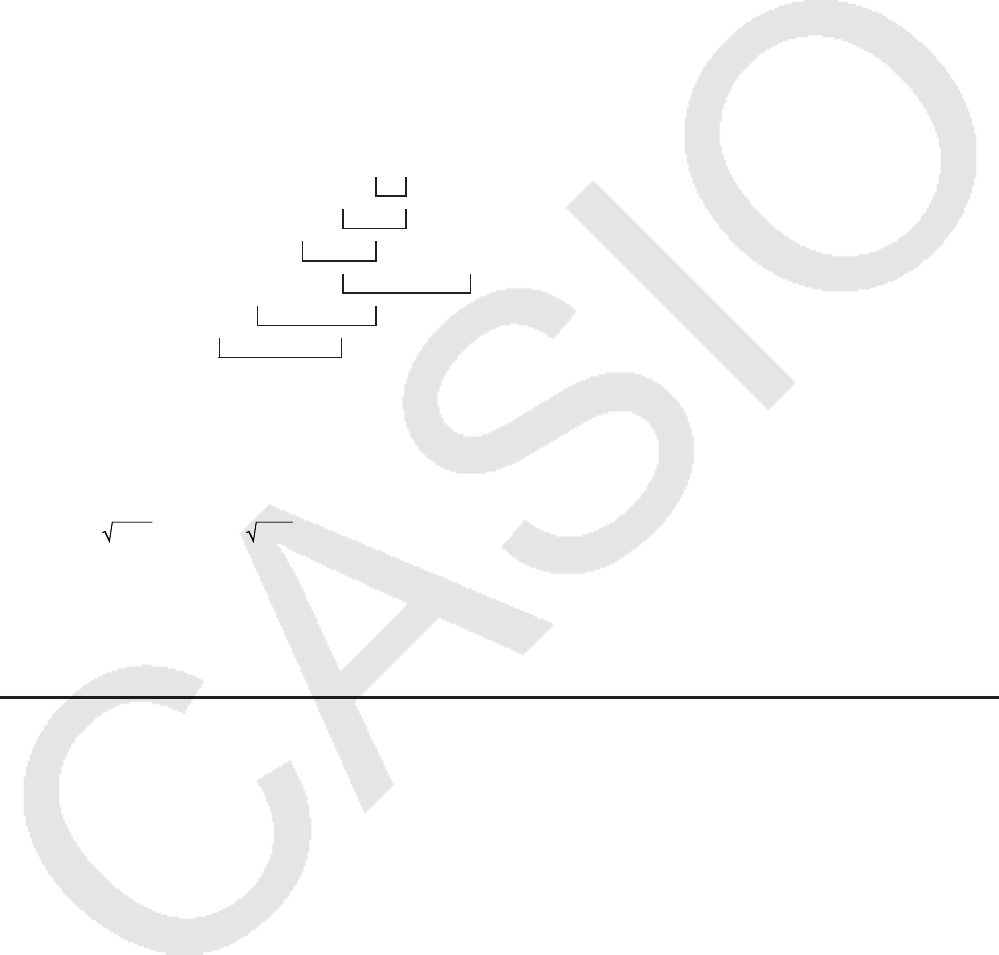
3-3
7 Abbreviated multiplication format in front of Type A functions, Type C functions, and
parenthesis.
2'3, A log2, etc.
8 Permutation, combination
nPr, nCr
9 Metric conversion commands
0 × , ÷, Int÷, Rnd
! +, –
@ Relational operators =, ≠ , >, <, ≥ , ≤
# And (logical operator), and (bitwise operator)
$ Or, Xor (logical operator), or, xor, xnor (bitwise operator)
*
1
You can combine the contents of multiple function memory (fn) locations into composite
functions. Specifying fn1(fn2), for example, results in the composite function fn1
°
fn2. A
composite function can consist of up to five functions.
Example 2 + 3 × (log sin2 π
2
+ 6.8) = 22.07101691 (angle unit = Rad)
• You cannot use a differential, quadratic differential, integration, Σ , maximum/minimum value,
Solve, RndFix or log
a
b calculation expression inside of a RndFix calculation term.
• When functions with the same priority are used in series, execution is performed from right to
left.
e
x
In 120 → e
x
{In( 120)}
Otherwise, execution is from left to right.
• Compound functions are executed from right to left.
• Anything contained within parentheses receives highest priority.
k Multiplication Operations without a Multiplication Sign
You can omit the multiplication sign (×) in any of the following operations.
• Before Type A functions (1 on page 3-2) and Type C functions (6 on page 3-2), except for
negative signs
Example 1 2sin30, 10log1.2, 2
'
3
, 2Pol(5, 12), etc.
• Before constants, variable names, memory names
Example 2 2π, 2AB, 3Ans, etc.
• Before an open parenthesis
Example 3 3(5 + 6), (A + 1)(B – 1), etc.
Note
If you execute a calculation that includes both division and multiplication operations in which
a multiplication sign has been omitted, parentheses will be inserted automatically as shown in
the examples below.
1
2
3
4
5
6
1
2
3
4
5
6


















